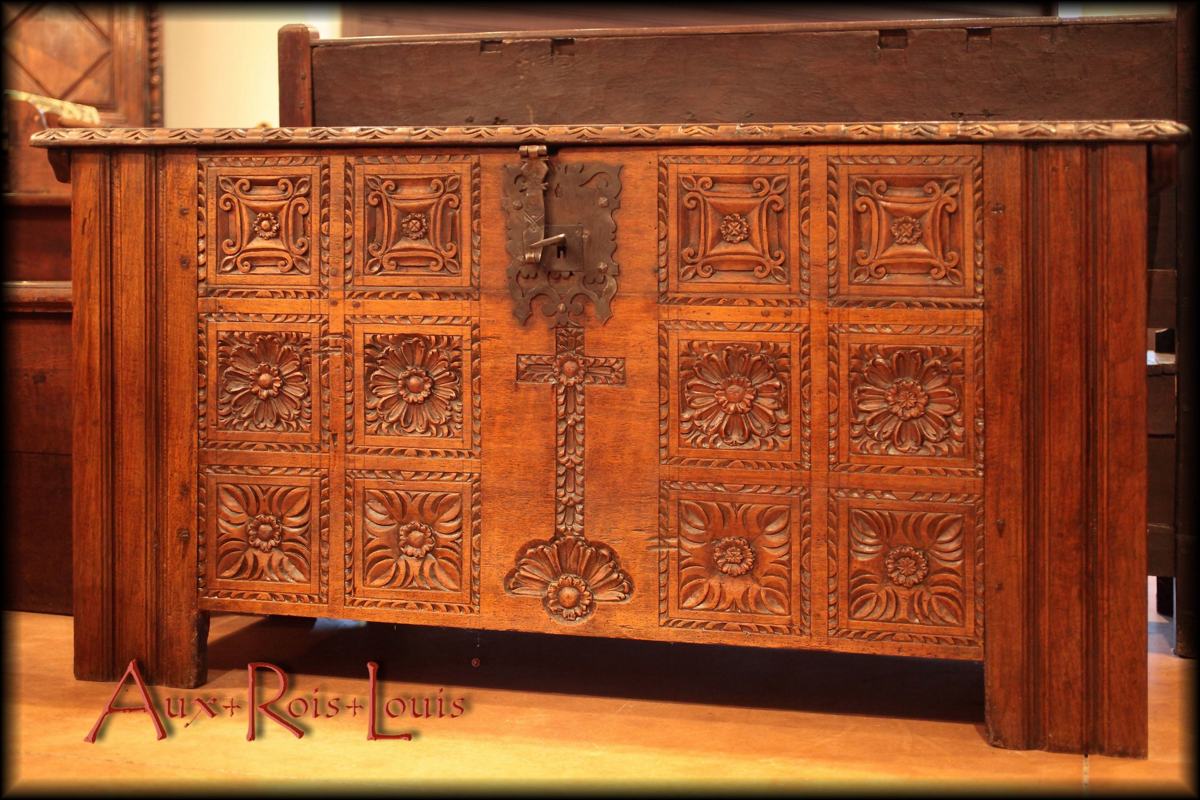
- All
- 15ᵗʰ century
- 17ᵗʰ century
- 18ᵗʰ century
- Aquitaine
- Auvergne
- Béarnais
- Bordelais
- Castle furniture
- Chestnut
- China
- Country furniture
- France
- Furnitures
- Haute-Loire
- High Middle Ages
- Île de France
- Knight Chest
- Louis XIII
- Metal
- Oak
- Périgord
- Period furniture
- Popular art furniture
- Provincial art
- Renaissance
- Small furniture
- South West of France
- Stagecoach travel trunk
- The treasure corner
- Travel trunk
- Trunk
- Types of furniture
- Walnut
- Wedding trunk
- Wood species
Knight’s Oak Armour Chest – 15th Century – High Middle Ages – Périgord – [ME148]
AUX-ROIS-LOUIS’S TREASURES FILMING AT CHÂTEAU DE BIRON IN PÉRIGORD FOR THE SERIES ‘FORTUNE DE FRANCE’ Adapted from Robert Merle’s literary fresco, a writer native to Sarlat, the “Fortune de France” series directed by Christopher Thomson took up residence at Château de Biron, seat of one of the oldest baronies in Périgord, in spring 2023. It…
Coach Travel Chest in Leather and Wood – 18th Century – Île de France – [ME124]
The vanity one carries with them in the 18th century is made from leather, brass, and wood. These natural materials were assembled by the guild of trunk makers, with no recourse to plastics which of course did not yet exist. Let’s rediscover the charm of yesteryear’s luggage with this delicate coach travel chest in leather, brass, and wood, a surviving witness of the Renaissance’s golden days in France.
Studded Travel Trunk – 18th Century – China – [ME126]
Who can decipher the sinograms traced on this precious travel trunk, tossed about in the Chinese mountains in the 18th century? For now, it keeps its secrets and its beautiful Chinese red patina inside.
Medallion Oak Chest – 18th Century – The Vosges – [MP041]
This light oak chest from the Vosges dating back to the 18th century shines thanks to its central medallion that embraces the entire available height. This generous motif is further enhanced by the flower-adorned panels that surround it.
Natural Oak End-of-Bed Chest – 18th Century – South West – [MP046]
It carries the aroma of beeswax that has permeated its natural oak since the 18th century, the era of its birth – a symbol of the union of a young couple whose initials were M and P… This end-of-bed chest is eagerly waiting to return to a room where love will reign, where love will be the law, etc.
Wedding Chest in Larch Wood – 18th Century – Haute-Loire – [MP048]
Here is an authentic Auvergne piece of furniture, a testament to the folk art as it manifested itself in the 18th century in the southeastern part of the Massif Central. This is a wedding chest assembled with thick larch wood planks, adorned with naive ornamentation inspired by the stylistic repertoires of Louis XIII and Louis XIV.
Chest of Maison Forte in blond walnut – 17th century – Périgord – [ME078]
Fresh as a daisy from the height of these four centuries, this Maison Forte chest in blond walnut, nourished with pure beeswax from a very young age, is now setting off in search of a new home where its functions as spacious laundry will be recognized and duly appreciated.
Chest of Knight in walnut – 18ᵗʰ century – Périgord – [ME081]
Its bird feathers link it to the Louis XIII style and its ancestors traveling chests that roamed the countryside, carrying the armor of their knights who went to war. Dating from the beginning of the 18th century, this robust walnut chest will have had the chance to live a peaceful life in the castle, in a Périgord that has finally been pacified.
Oak wedding chest – 18th century – Auvergne – [MP028]
Flowers, passion, a dowry and its sheath Here is how this piece of furniture appeared in Auvergne in the 18th century. Prelude to the wedding, the engagement makes it possible to organize as it should, the imminent arrival of the bride in the family of the groom, under the condition of a dowry made at…
Folk art chestnut chest – 18ᵗʰ century – Béarn – [MP027]
Folk art chestnut chest – 18th century – Béarn The secret code to enter the spiritual universe of this chest overloaded with messages is undoubtedly the number 6. Keep it in mind to sharpen your gaze. Around the Latin Cross located under the keyhole, four 6-pointed stars immediately illuminate the facade. Theses stars represent IX…
Renaissance style chest in walnut – 17ᵗʰ century – Périgord – [ME051]
Renaissance style chest in walnut – 17ᵗʰ century – Périgord – [ME051] Made in Périgord in the 17ᵗʰ century, this walnut chest uses the aesthetic codes of the Renaissance, a pivotal period between the Middle Ages and modern times. You can recognize the famous gadrooned moldings around the edge of the plateau and on the…
Walnut wood chest – 18ᵗʰ century – Bordeaux Region [ME005]
Walnut wood chest – 18ᵗʰ century – Bordeaux Region front embellished with floral vine design and tree of life turned feet rich moulding adding depth at base beautiful wrought iron handles on either side keyhole decorated with fantastic animals Front embellished with floral vine design and tree of life. Turned feet, rich moulding adding depth…
Walnut coffer – 18ᵗʰ century – Périgord – [ME010]
Walnut coffer – 18ᵗʰ century – Périgord Made of exceptionally fine wood the sides and top have been made from the same plank ofaged walnut. The arched moulding surrounding the lock is indicative of the skill of contempory cabinet makers. The top is decorated with painted fleur de lys – symbol of nobility. Carrying handles of…

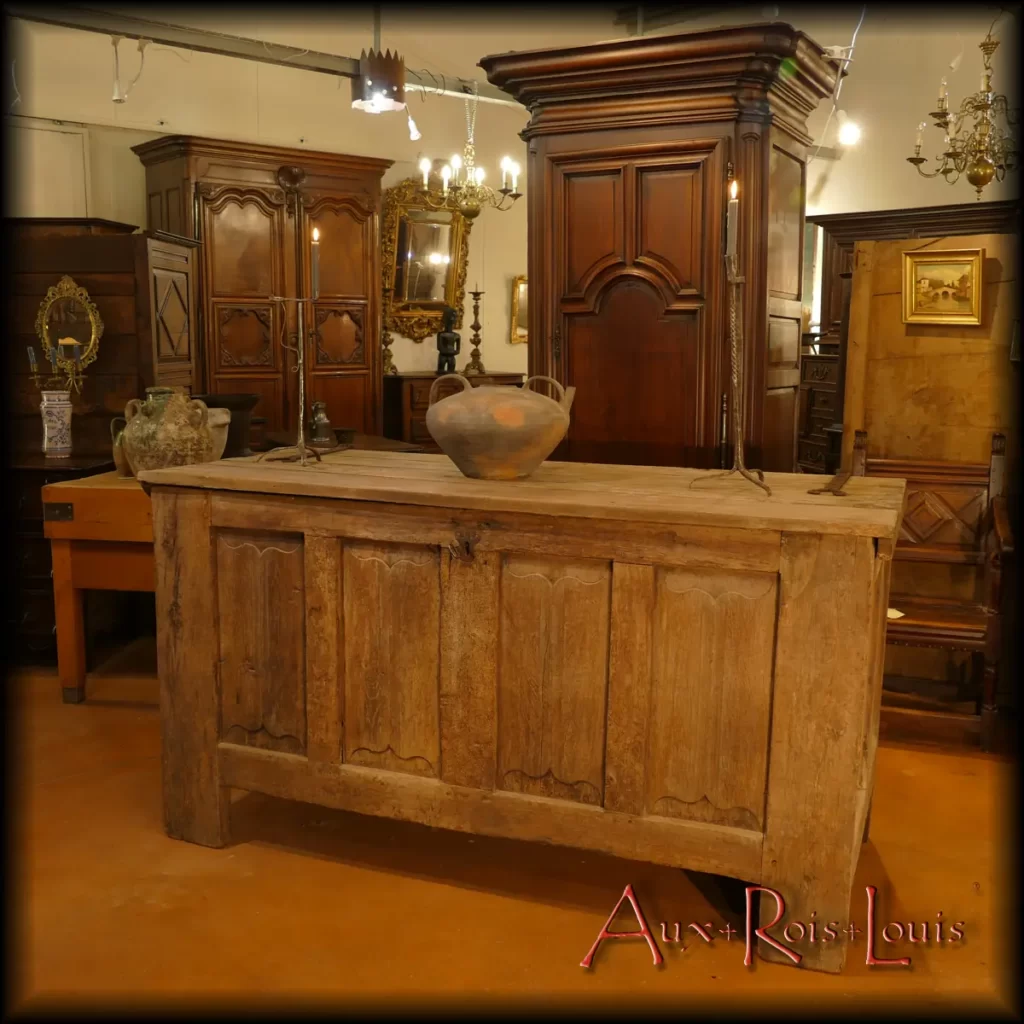
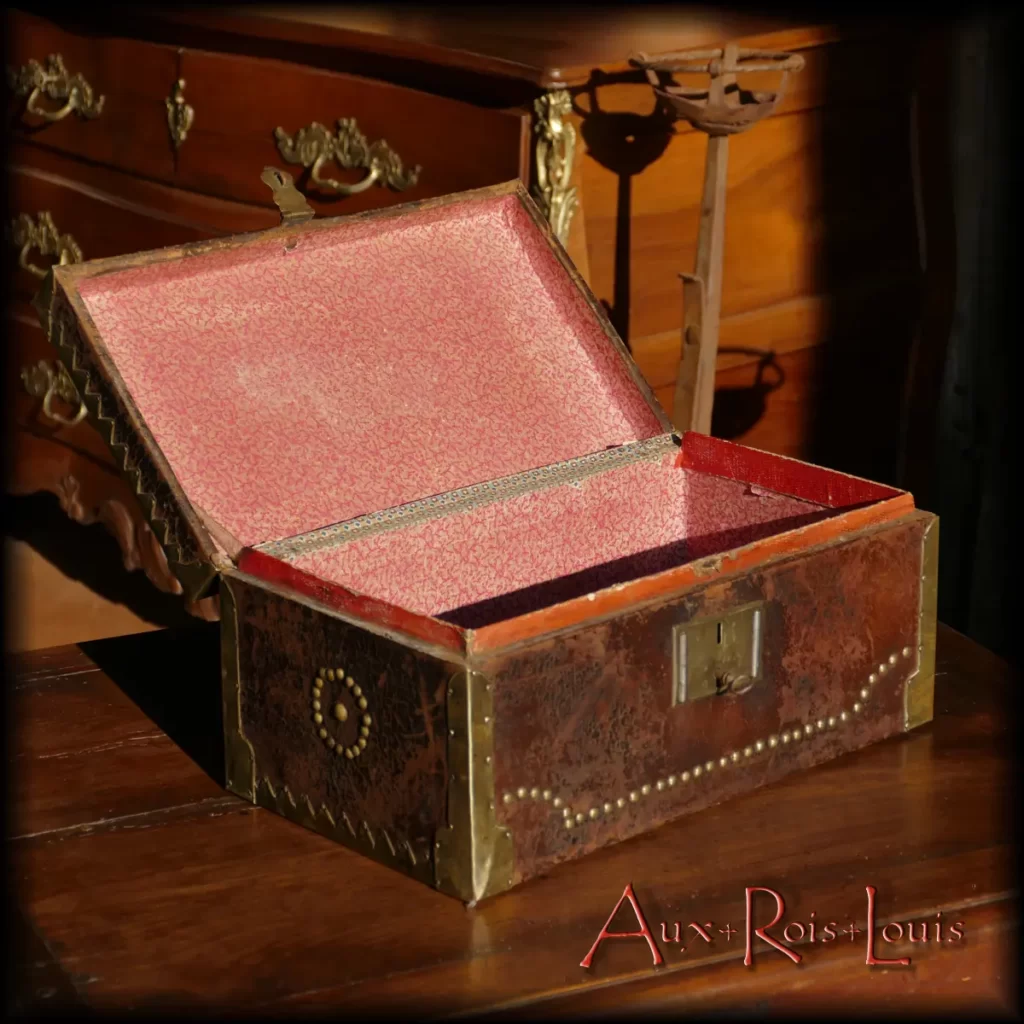
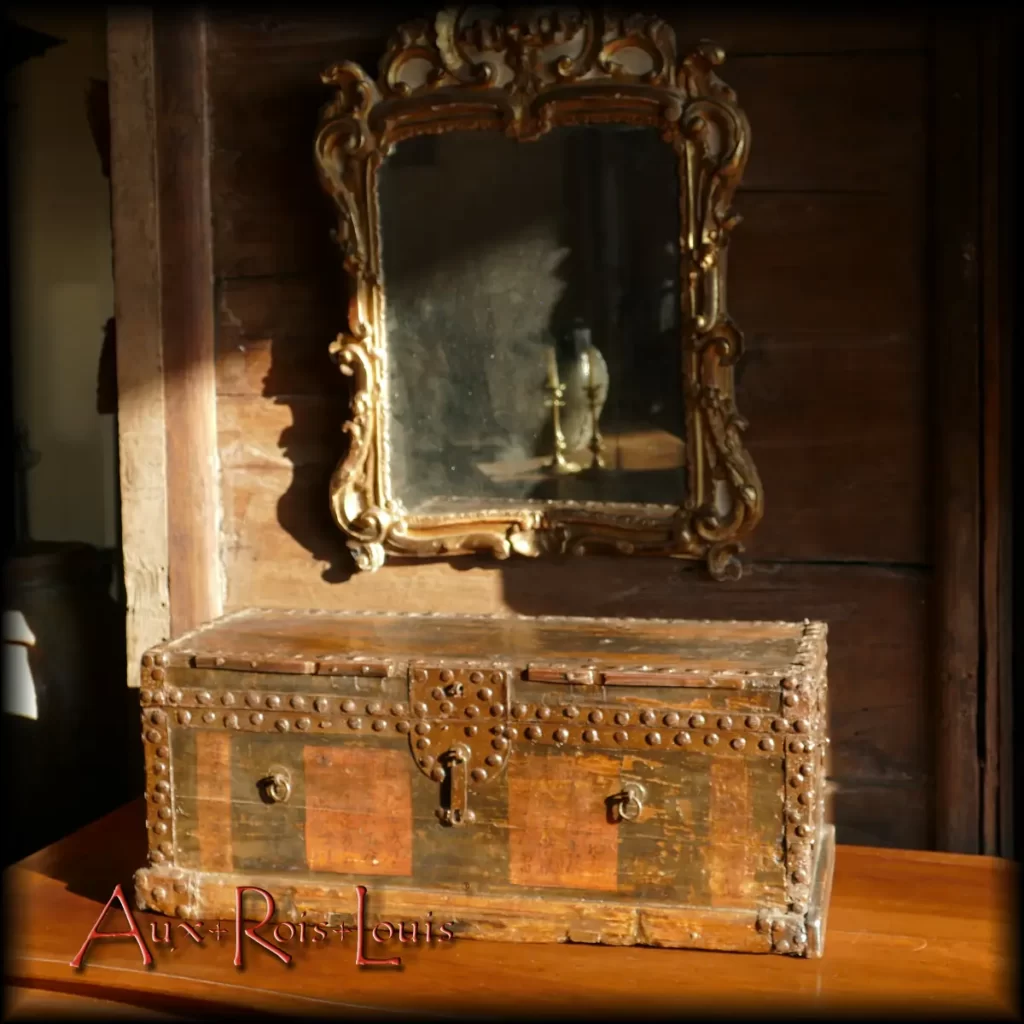
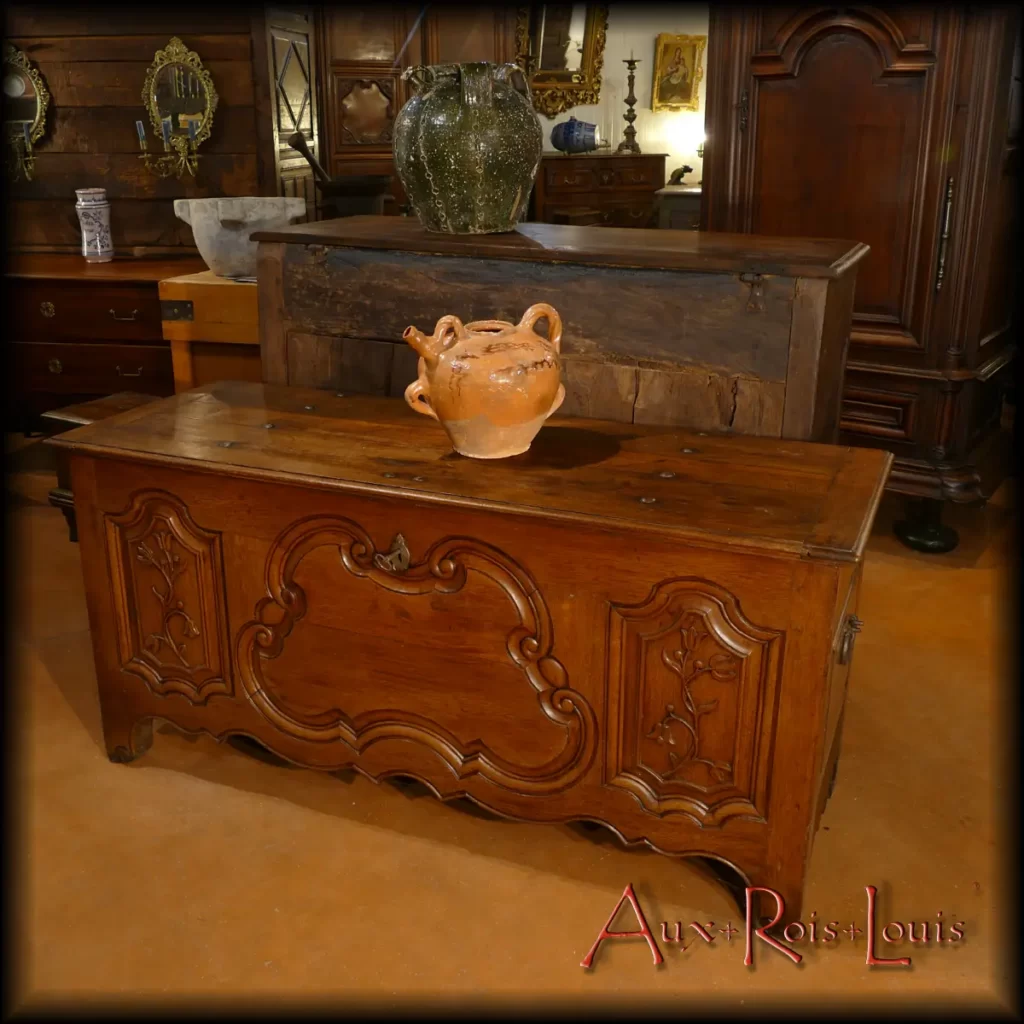
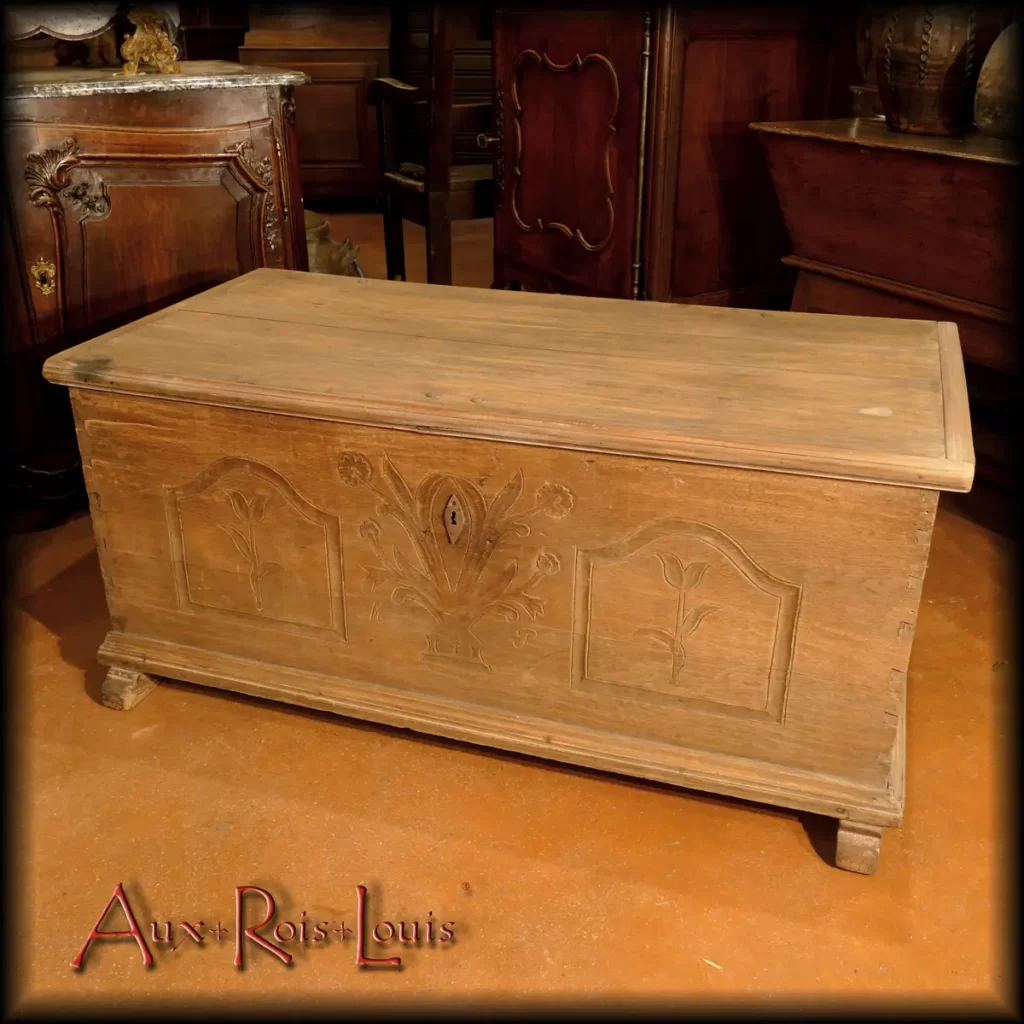
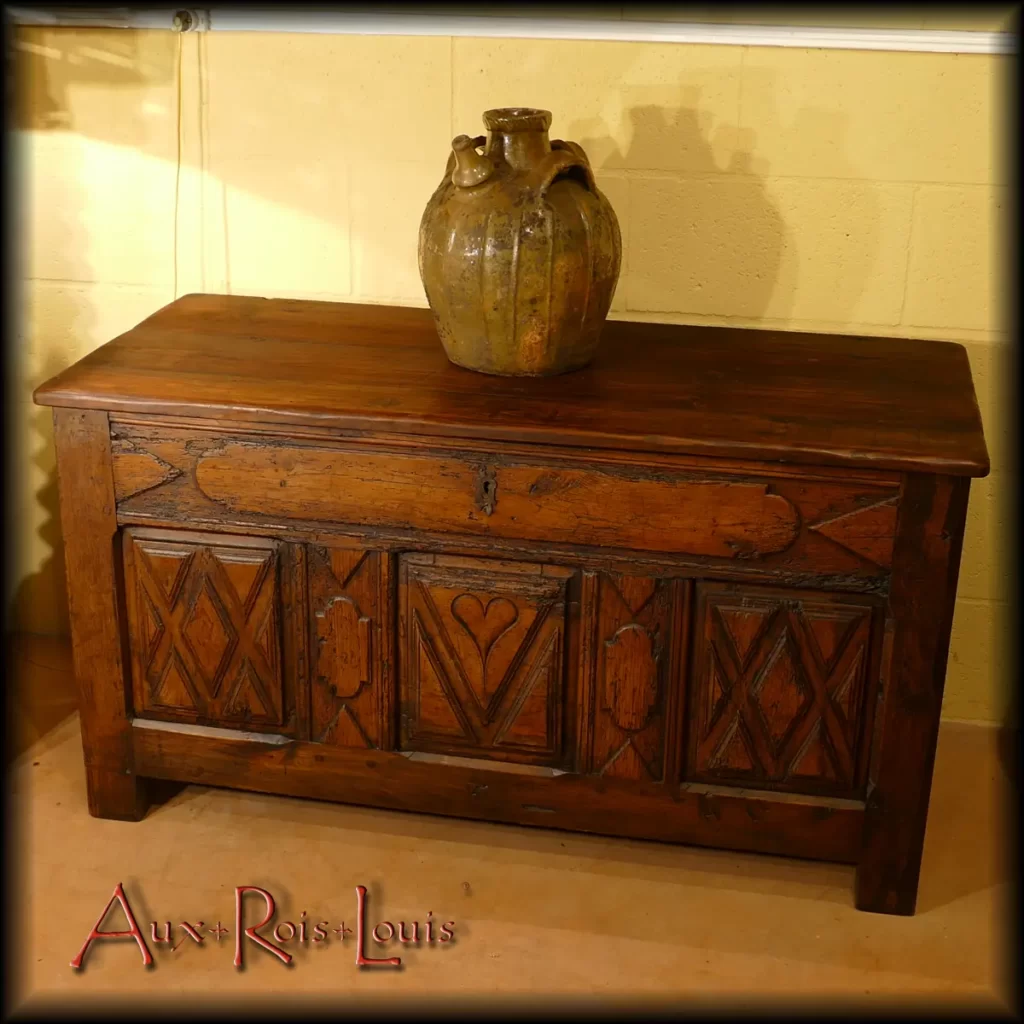
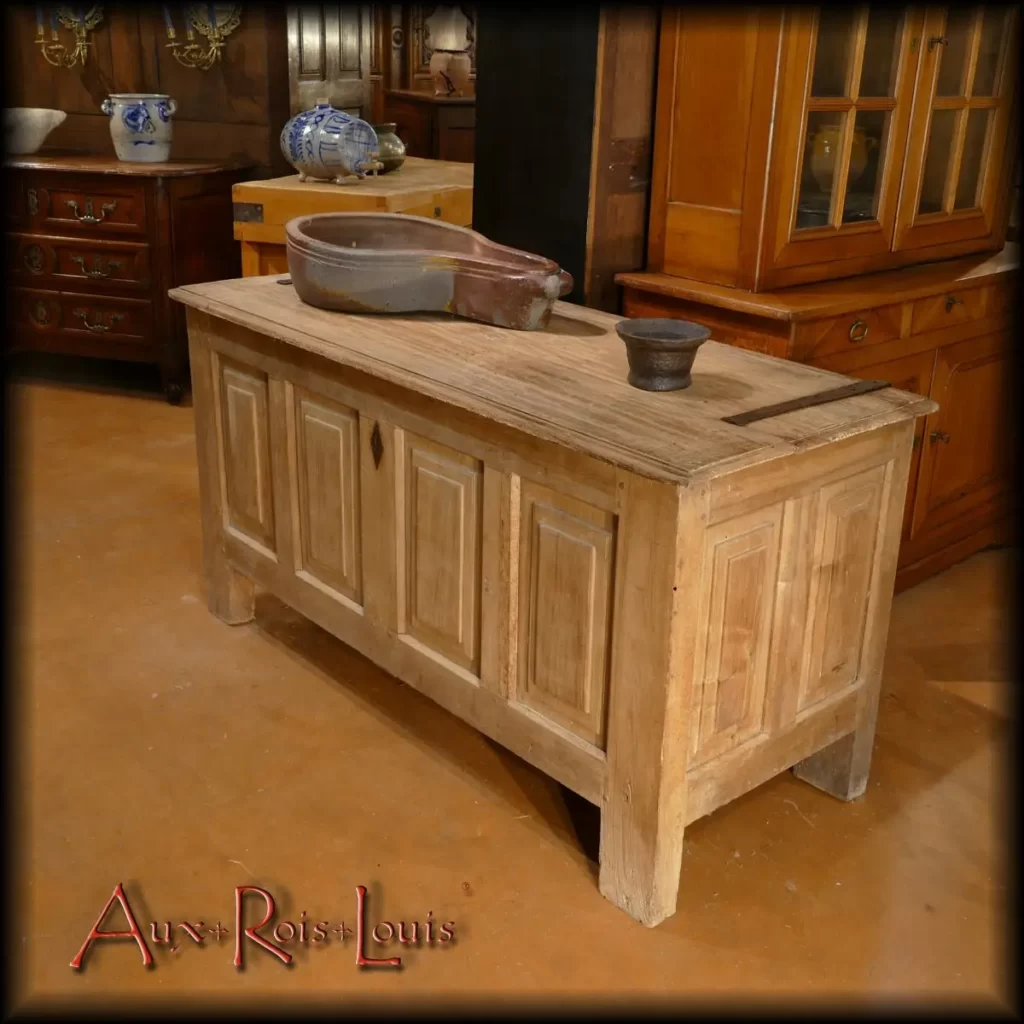
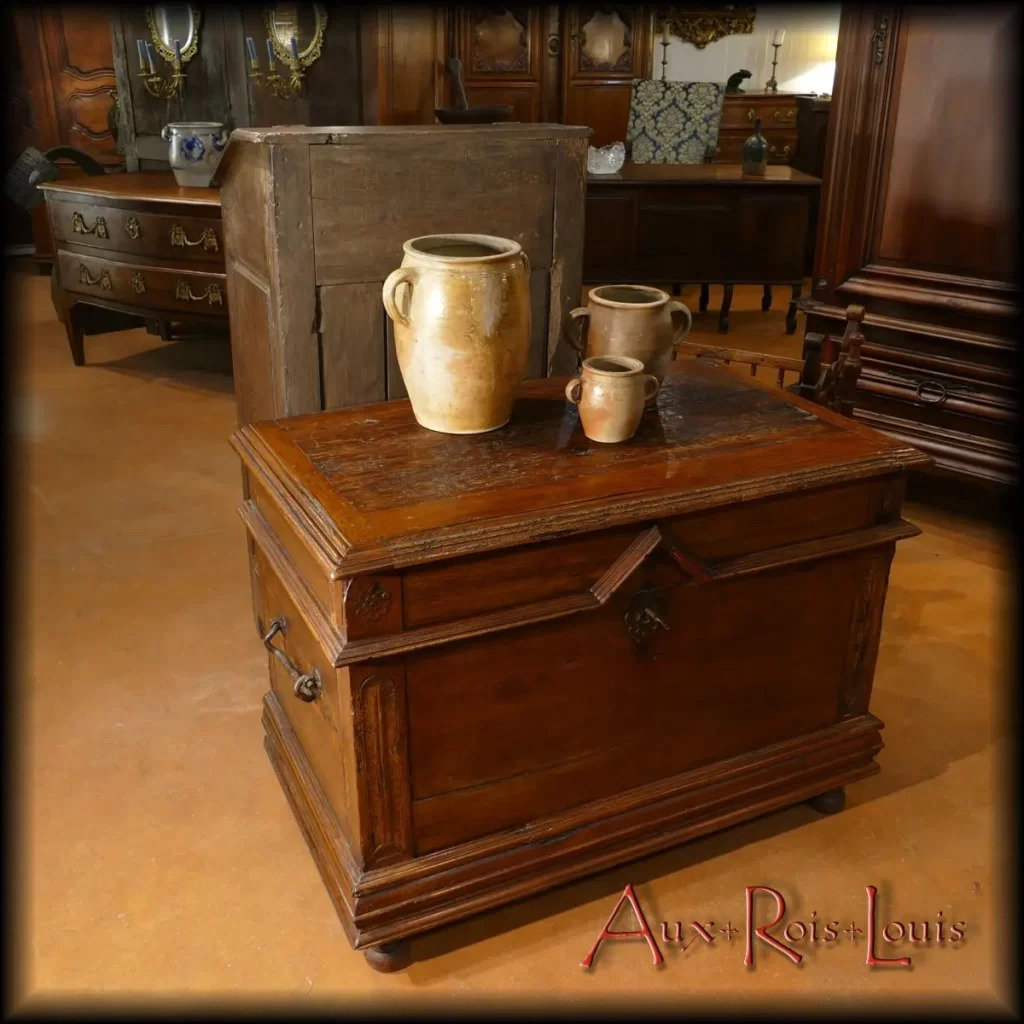
![Oak wedding chest – 18th century – Auvergne – [MP028]](https://www.aux-rois-louis.com/wp-content/uploads/2022/03/MP028_705x900.jpg)
![Folk art chestnut chest – 18th century – Béarn – [MP027]](https://www.aux-rois-louis.com/wp-content/uploads/2022/02/MP027_689x800.jpg)
![Renaissance style chest in walnut - 17ᵗʰ century - Périgord - [ME051]](https://www.aux-rois-louis.com/wp-content/uploads/2021/04/ME051_P1600475.jpg)
![Walnut wood chest – 18ᵗʰ century – Bordeaux Region – [ME005]](https://www.aux-rois-louis.com/wp-content/uploads/2022/07/ME005_N04_P1350548_2.webp)
![Walnut coffer – 18ᵗʰ century – Périgord – [ME010]](https://www.aux-rois-louis.com/wp-content/uploads/2022/07/ME010_N10_P1500391.webp)